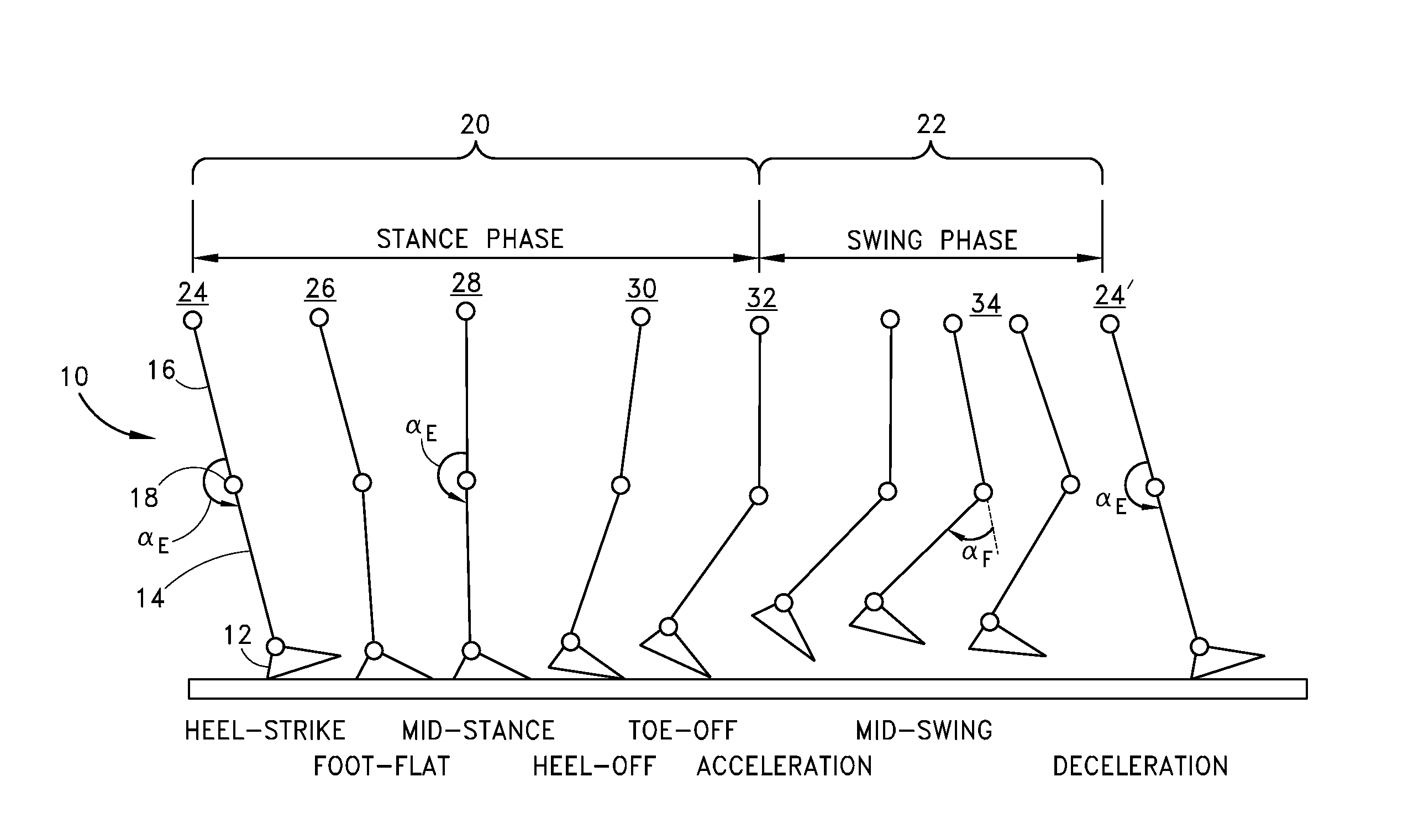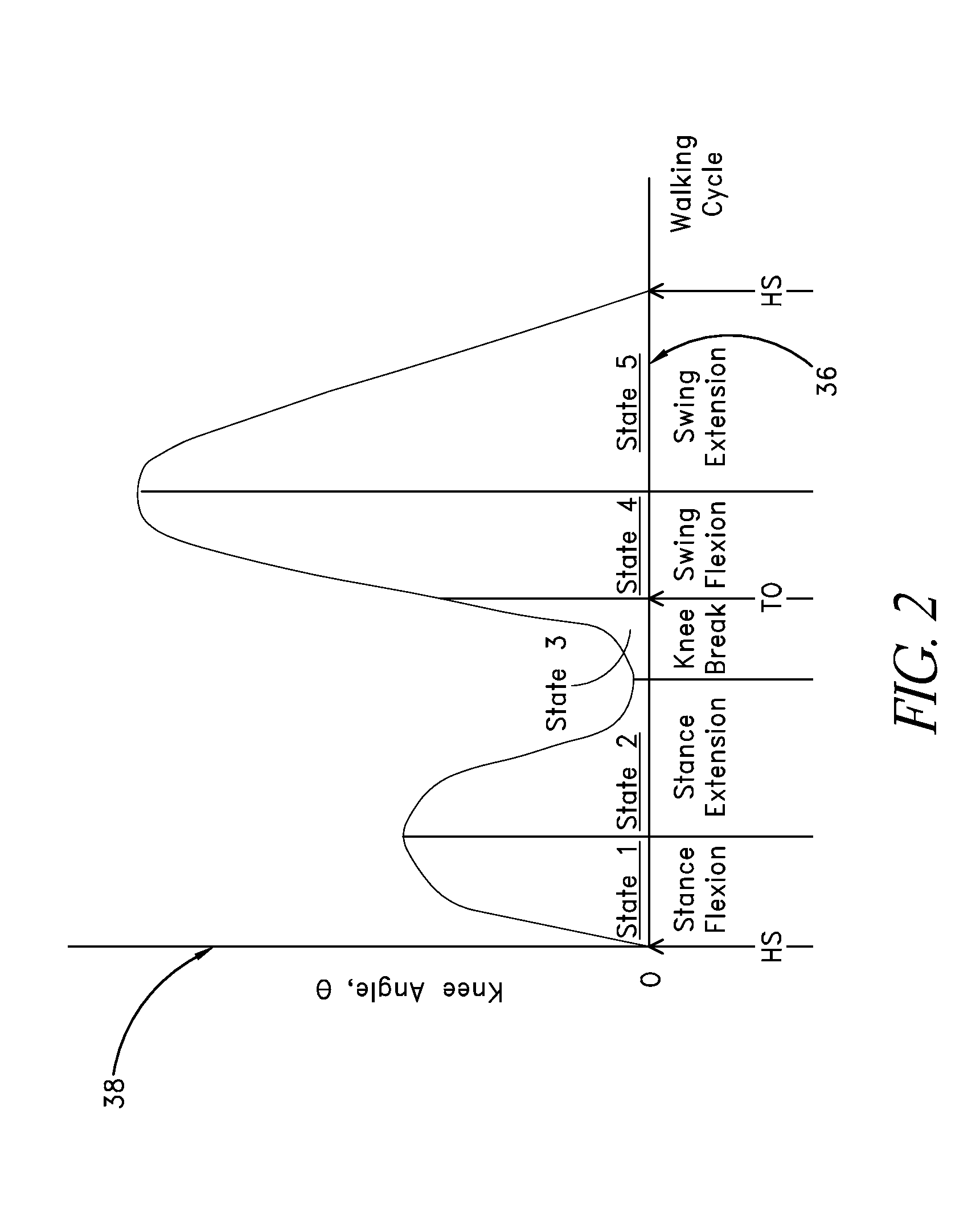Control system for prosthetic knee
a control system and prosthetic knee technology, applied in the field of prosthetic knees, can solve the problems of lack of adaptiveness, time-consuming methodology for programming a prosthetic knee, and inability to compensate for unforeseen changes in the patient's or the patient's environmen
- Summary
- Abstract
- Description
- Claims
- Application Information
AI Technical Summary
Benefits of technology
Problems solved by technology
Method used
Image
Examples
Embodiment Construction
[0025]In order for a trans-femoral (above-knee) amputee to walk in a variety of circumstances, a prosthetic knee should provide stance control to limit buckling when weight is applied to the limb. In addition, a prosthesis should provide swing phase control so that the knee reaches full extension just prior to heel strike in a smooth and natural manner.
[0026]Unlike a biological knee, a prosthetic knee should accomplish both stance and swing control without direct knowledge of its user's intent or of the environment. Rather, a prosthetic knee has to infer whether the amputee is walking, running, or sitting down. It should also determine when subtle or drastic changes occur in the environment, such as when the user lifts a suitcase or walks down a slope. Still further, the prosthesis should move naturally and be safe at all locomotory speeds, and should perform equally well for all amputees, independent of body weight, height, or activity level, without requiring patient-specific info...
PUM
 Login to View More
Login to View More Abstract
Description
Claims
Application Information
 Login to View More
Login to View More - R&D
- Intellectual Property
- Life Sciences
- Materials
- Tech Scout
- Unparalleled Data Quality
- Higher Quality Content
- 60% Fewer Hallucinations
Browse by: Latest US Patents, China's latest patents, Technical Efficacy Thesaurus, Application Domain, Technology Topic, Popular Technical Reports.
© 2025 PatSnap. All rights reserved.Legal|Privacy policy|Modern Slavery Act Transparency Statement|Sitemap|About US| Contact US: help@patsnap.com



